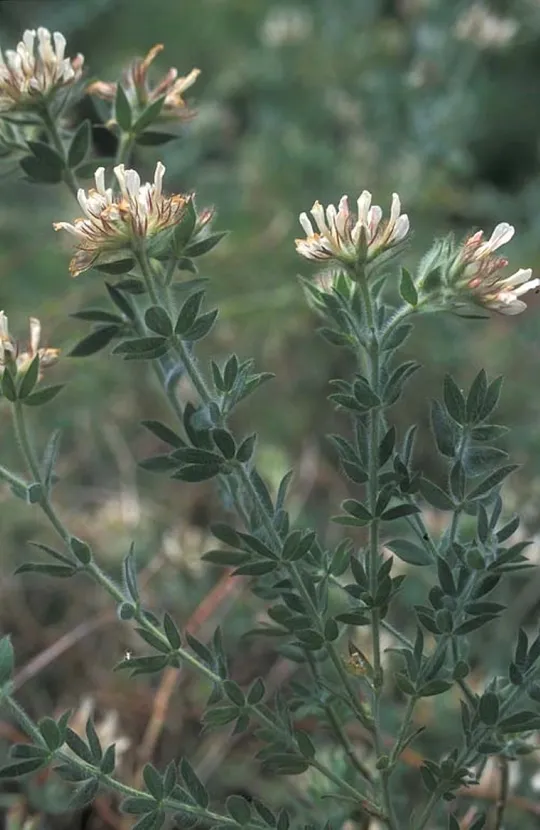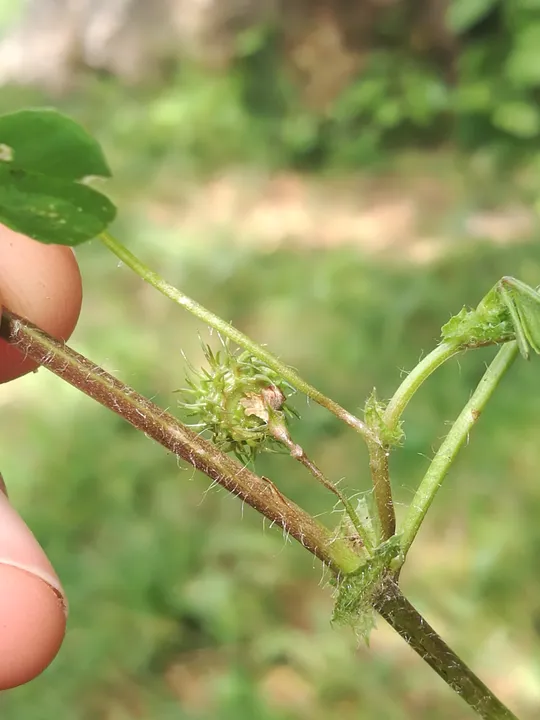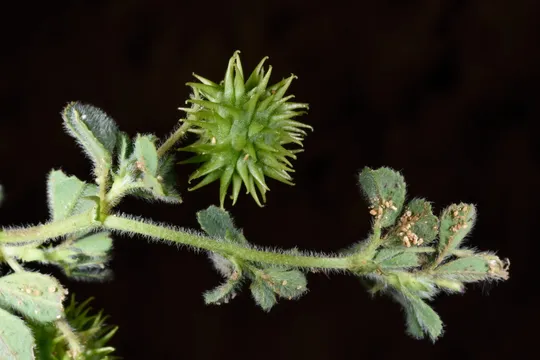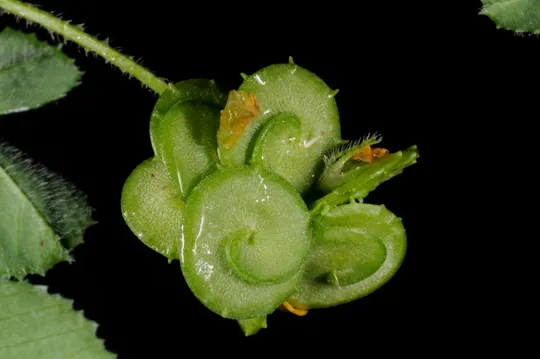Scarlet Pea
Indigofera coerulea
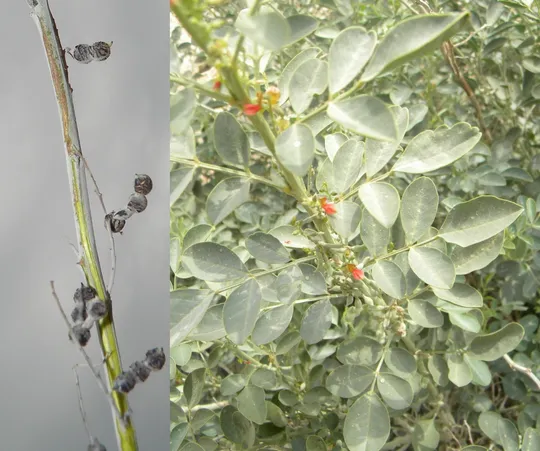
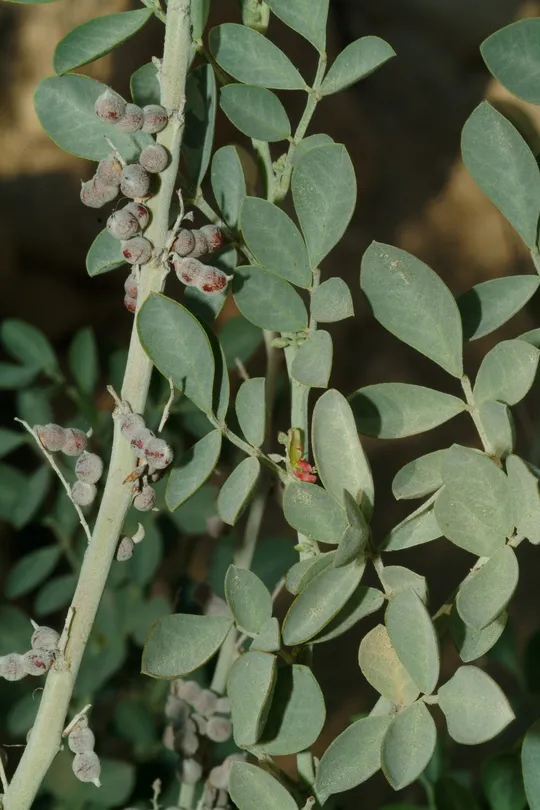
Indigofera articulata is very
close to I. tinctoria and both were used to produce indigo dye. Michael
Belcher, the biologist of the En Gedi Nature Reserve believes that I. articulate
is an ethno-botanical element in the Dead Sea area and should be preserved as a
relict of an ancient local traditional culture, unlike the modern global feral
species (Belcher and Belcher, 2001).
Indigofera articulata now grows in the Dead
Sea area. It was considered extinct until 1994,
when Michael Belcher found it in En Gedi. In 1999, it was also found in Ne’ot
HaKikar. There are an estimated three sites in Israel. In the Flora Palaestina
it is also noted it from the upper Jordan Valley (Kinarot Valley) although
there is no evidence of this in the Herbarium. It may have been found in the
past as a remnant of agricultural cultivation for dye production.
I. articulata was added to the
Flora Palaestina by Zohary (1972) following its mention in the Flora of Post,
where the plant was noted from Tiberias, Bet She'an, Mazra’a and Safi on the
Jordanian coast of the Dead Sea.
Rocky slopes and
wadis in extreme deserts are its natural habitat, but in Israel it is known
from the edges of date palm groves in the En Gedi area or on colluvial soil on
field edges. In Egypt Indigofera articulata grows on sandy plains in the Sudanian zone
in Upper Egypt, and in Somalia it grows in dry savannas and on roadsides up to
an altitude of 1350 meters.
The genus Indigofera contains 750 species of annual plants and shrubs in
various regions of the tropical world; its center of diversity is in Africa. In
East Africa 145 species grow, in Egypt 10 species, and in Israel only one
species grows, which marks the northernmost limit of the genus Indigofera in its range. Identifying
I. articulata and I. tinctoria as
one taxon is not accepted
today and all the flora books consider them separate species. I.
articulata is found
only as a wild species while I. tinctoria is both a wild and cultured plant whose
distribution is much broader than that of I. articulata and its range extends from Niger
in West Africa to India and Sri Lanka. I.tinctoria differs from I.
articulata by its
greater number of leaflets 7-9 (occasionally 5 or even 11), its fruit has
slight constrictions between the seeds and a thick and prominent vein along the
dorsal and ventral sides. Kolont (1997) notes additional differences in flower
color and leaflets in her book on the Arabian Flora, but these characters are
not mentioned in other floras. The plants found at En Gedi and Ne’ot HaKikar
correspond to I. articulata, and not to I. tinctoria. Consequently, in this book, it
is considered an extremely endangered wild species and not a remnant of a
previously widespread cultured growth in the Dead Sea rift.
Interestingly,
neither I. articulata nor I. tinctoria grow in the Sinai Peninsula.
·
The distribution of Indigofera articulata is probably limited
to only one region in Israel – the Dead Sea area – as it was in the past, and
data on its previous distribution in an additional region – the Kinarot valley
– is uncertain. As there is no herbarium evidence, the plants are probably cultured
specimens. There is no way to tell if the renewed discovery of the plant in
1995 in En Gedi after it had becoming extinct is a new colonization or a discovery
of existing plants. In either case, this refers to only a few plants in Israel.
·
There are only three I. articulata individuals in Israel!
·
I. articulata is found at the
extreme northern edge of its range, and its tiny and isolated populations threaten
it with random extinction with no possibility of regeneration.
·
I. articulata is protected in the
En Gedi nature reserve.
·
I. articulata is a broadly
distributed Sudanian species that is not globally endangered.
Indigofera articulata should be
restored and acclimatized in the En Gedi Nature Reserve and elsewhere in the
region, in addition to what has already been done by Michael Belcher. I. tinctoria should be imported again and the
taxonomic and genetic proximity of the two species should be studied.
Indigofera articulata is found in
Africa: Algeria, Egypt, Sudan, Ethiopia (probably todays Eritrea), Djibouti,
and Somalia; in Asia: Arabia, Yemen, the Socotra Island, Iran and Pakistan.
Indigofera
articulata is
an extremely rare Sudanian shrub that has only three specimens growing at two
sites in the Dead Sea area in Israel. The species was considered extinct until
its rediscovery in 1995. The plants in Israel are the northernmost specimens of
the species and of the genus in the world. I. articulata should be naturalized and acclimatized in the Dead Sea area.
Current Occupancy Map
| 1000 squre meter pixel | 5000 squre meter pixel | 10000 squre meter pixel | |
|---|---|---|---|
| number of observations | 0 | 0 | 0 |
| in total pixels | 0 | 0 | 0 |
| Family | Fabaceae |
| Classification | On the endangered species list |
| Ecosystem | Extreme Desert |
| Chorotype | Sudanian |
| Conservation Site | En Gedi |
| Rarity |
1
5
6
|
|---|---|
| Vulnerability |
0
2
4
|
| Attractiveness |
0
0
4
|
| Endemism |
0
0
4
|
| Red number |
1
4.2
10
|
| Peripherality | 1 |
| IUCN category | DD EW EX LC CR EN VU NT |
| Threat Definition according to the red book | Endangered |
 Participated:
Participated:
